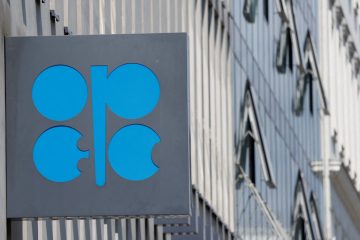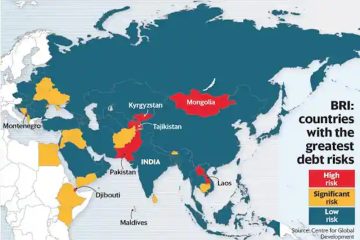| Symbol | Last | Change | % | High | Low |
|---|---|---|---|---|---|
| EUR / INR | 97.013 | -0.085 | -0.09% | 0.000 | 0.000 |
| Close | GMT Time : Sun Jun 01 2025 06:16 | ||||
EUR/INR : Intraday Live Chart
EUR/INR : Technical Signal Buy & Sell
| 5 Min Signal | 1 Hour Signal | 1 Day Signal |
|---|---|---|
| Sell | Buy | Sell |
EUR/INR : Moving Averages
| Period | MA 20 | MA 50 | MA 100 |
|---|---|---|---|
| 5 Minutes | 97.05 | 97.07 | 97.03 |
| 1 Hour | 96.97 | 96.74 | 96.77 |
| 1 Day | 86.99 | 92.70 | 92.45 |
| 1 Week | 92.82 | 91.56 | 90.64 |
EUR/INR : Technical Resistance Level
| Resistance 1 - R1 | Resistance 2 - R2 | Resistance 3 - r3 |
|---|---|---|
| 0.000 | 0.000 | 0.000 |
EUR/INR : Technical Support Level
| Support 1 - S1 | Support 2 - S2 | Support 3 - S3 |
|---|---|---|
| 0.000 | 0.000 | 0.000 |
EUR/INR : Periodical High, Low & Average
| Period | High Change from Last | Low Change from Last | Average Change from Last |
|---|---|---|---|
| 1 Week | 97.166 -0.153 | 0.000 +97.013 | 82.944 +14.069 |
| 1 Month | 97.166 -0.153 | 0.000 +97.013 | 89.792 +7.221 |
| 3 Month | 98.122 -1.109 | 0.000 +97.013 | 93.041 +3.972 |
| 6 Month | 98.122 -1.109 | 0.000 +97.013 | 91.461 +5.552 |
| 1 Year | 98.122 -1.109 | 0.000 +97.013 | 91.333 +5.680 |
EUR/INR : Historical Chart
EUR to INR Exchange Rate History: A Journey Through Inflation, Interest Rates, and Structural Shifts
The EUR to INR exchange rate encapsulates a dynamic history between Europe’s unified currency and India’s emerging economy, shaped by divergent monetary policies, capital controls, inflation pressures, and global risk sentiment. Since the euro’s inception in 1999, the pair has witnessed sharp trends and long-term drifts, reflecting both internal macroeconomic shifts in India and policy evolution across the Eurozone.
1999–2002: Euro Launch and Early Rupee Stability
When the euro debuted in 1999, it initially faced skepticism in financial markets. Meanwhile, India was recovering from the Asian Financial Crisis with cautious reforms and relatively stable fiscal management. The EUR/INR rate started around 50 but fell to ~40 by 2002, largely due to euro weakness rather than rupee strength.
India’s rupee remained stable during this period due to strict capital controls, a closed financial system, and steady foreign reserves. The exchange rate decline was driven almost entirely by euro volatility.
2003–2008: Euro Strength Meets India’s Economic Takeoff
From 2003 to 2008, the euro surged globally thanks to rising ECB credibility and a weakening USD. The EUR to INR rate climbed from 40 to a high of 67 in mid-2008, marking a 67% appreciation of the euro in five years.
At the same time, India experienced one of its strongest growth phases, with GDP growth exceeding 8% and foreign inflows rising. However, the rupee couldn’t keep up with euro strength, resulting in significant upward pressure on EUR/INR. The surge was also driven by strong trade flows and increased euro-zone investments in India.
2009–2012: Financial Crisis and Rupee Weakness
The global financial crisis of 2008–09 triggered a capital flight from emerging markets. The INR weakened sharply, and the euro remained relatively strong, keeping EUR/INR in the 65–70 range.
While India rebounded from the crisis relatively fast, inflationary pressures, a widening current account deficit, and rising crude oil prices led to rupee underperformance. Even during the eurozone debt crisis (2010–12), the rupee’s struggles kept the EUR to INR rate high and volatile.
2013–2019: Structural Shifts and Eurozone Stability
India underwent major economic transitions: the taper tantrum of 2013, followed by structural reforms like GST, demonetization, and improved inflation targeting. The rupee became more market-driven, but remained under depreciation pressure due to persistent trade imbalances and capital account limitations.
Meanwhile, the ECB’s ultra-loose monetary policy and negative rates kept the euro subdued. This resulted in a range-bound EUR/INR trend between 72 and 82 during much of this period, with temporary spikes during times of global uncertainty.
2020–2024: Pandemic, Rate Hikes, and Inflation Divergence
The COVID-19 crisis brought high volatility. The EUR/INR rate jumped to 89 in 2020, before correcting to 85 by 2021. In 2022–2023, as the ECB began raising rates to combat eurozone inflation, the euro rebounded temporarily.
India, meanwhile, maintained macroeconomic discipline but faced rupee depreciation due to a strong U.S. dollar, rising imports, and geopolitical tensions. The EUR/INR rate averaged around 88–91 during 2023.
As of April 2025, EUR to INR trades around 90.10, reflecting euro softness, relative INR stability, and a cautious global environment where both the ECB and RBI maintain a tightening bias, albeit at different magnitudes.
✅ Key:
🟢 = INR appreciated vs euro
❌ = INR depreciated vs euro
⚠️ = Mixed or range-bound trend
📊 EUR to INR Exchange Rate by Decade
| Decade | Avg. EUR/INR Rate (Approx) | Change vs. Previous Decade | Key Events |
|---|---|---|---|
| 1999–2002 | 50 → 40 | 🟢 -20% INR appreciation | Euro launch volatility, INR stability |
| 2003–2008 | 40 → 67 | ❌ +67% INR depreciation | Euro surge, Indian growth surge but rupee underperformed |
| 2009–2012 | 67 → 70 | ❌ +4% INR depreciation | Post-GFC volatility, eurozone crisis, Indian macro issues |
| 2013–2019 | 70 → 82 | ❌ +17% INR depreciation | Taper tantrum, Indian reforms, ECB easing |
| 2020–2024 | 82 → 90 | ❌ +10% INR depreciation | Pandemic, euro rebound, INR pressured by global conditions |
The EUR to INR exchange rate remains sensitive to European interest rate differentials, India’s inflation outlook, and global capital flows. With both economies undergoing monetary tightening, the pair may experience reduced volatility in the near term. However, over the long run, India’s inflation tendency and trade deficits tend to push the rupee lower against the euro.
EUR/INR - Euro / Indian Rupee Currency Rate
Live Price of EUR/INR. EUR/INR Live Chart, Intraday & Historical Live Chart, Buy Sell Signal, EUR/INR News, EUR/INR Averages, Returns & Historical Data
» EUR/INR
» EUR/INR Real Time Quotes
» EUR/INR Live Chart
» EUR/INR Intraday Chart
» EUR/INR Historical Chart
» EUR/INR Buy Sell Signal
» EUR/INR News
» EUR/INR Videos
» EUR/INR Averages
» EUR/INR Currency Pair
» EUR/INR Historical Data










